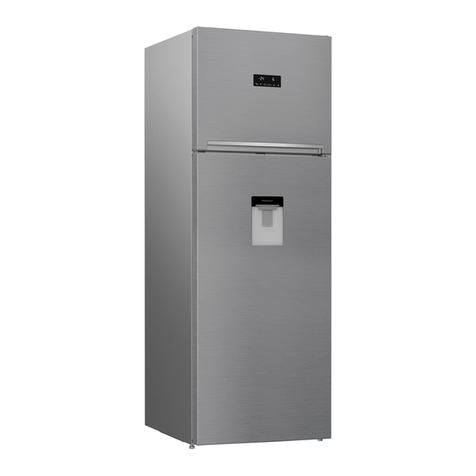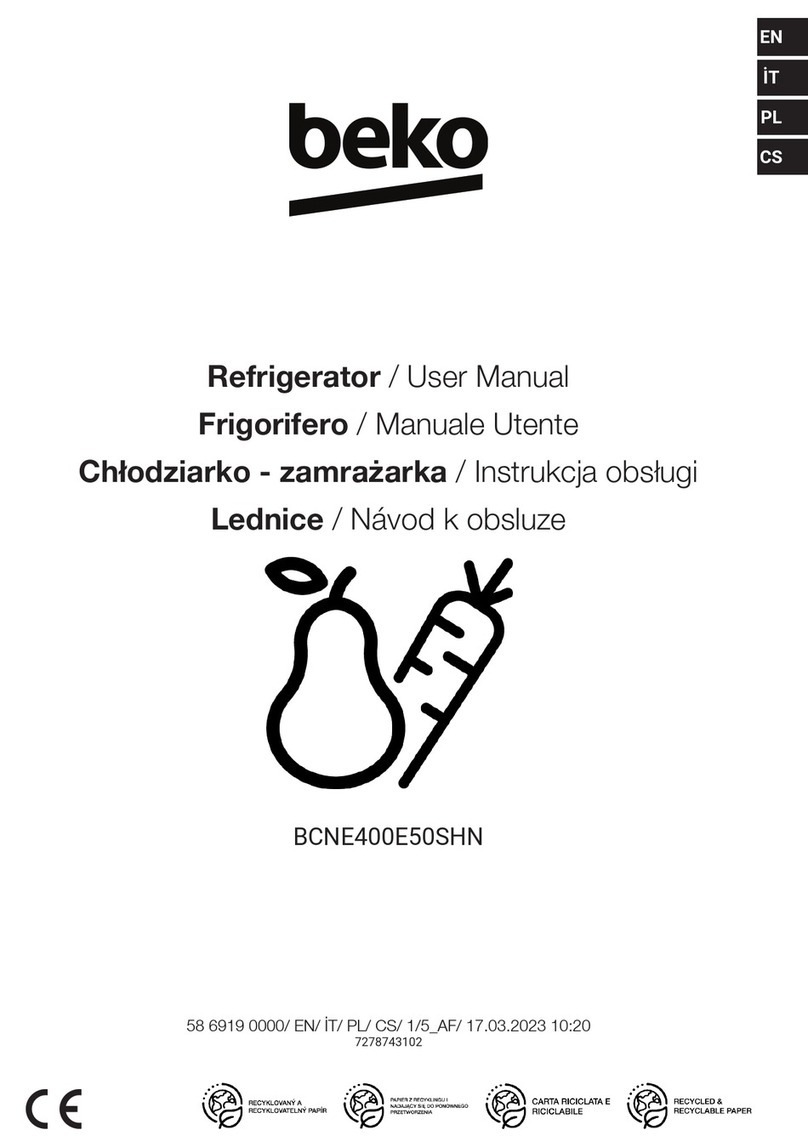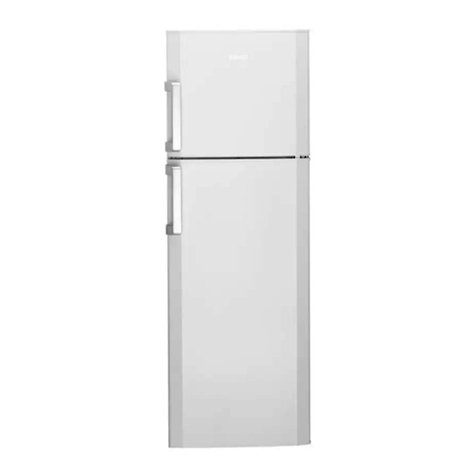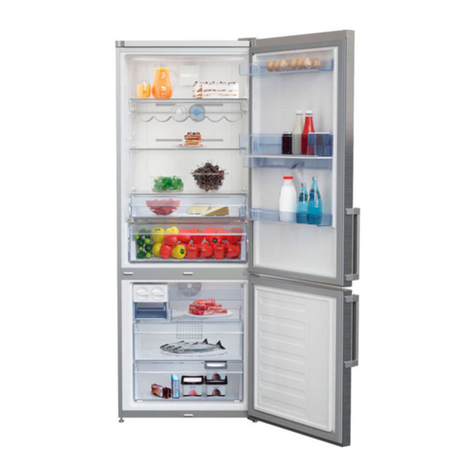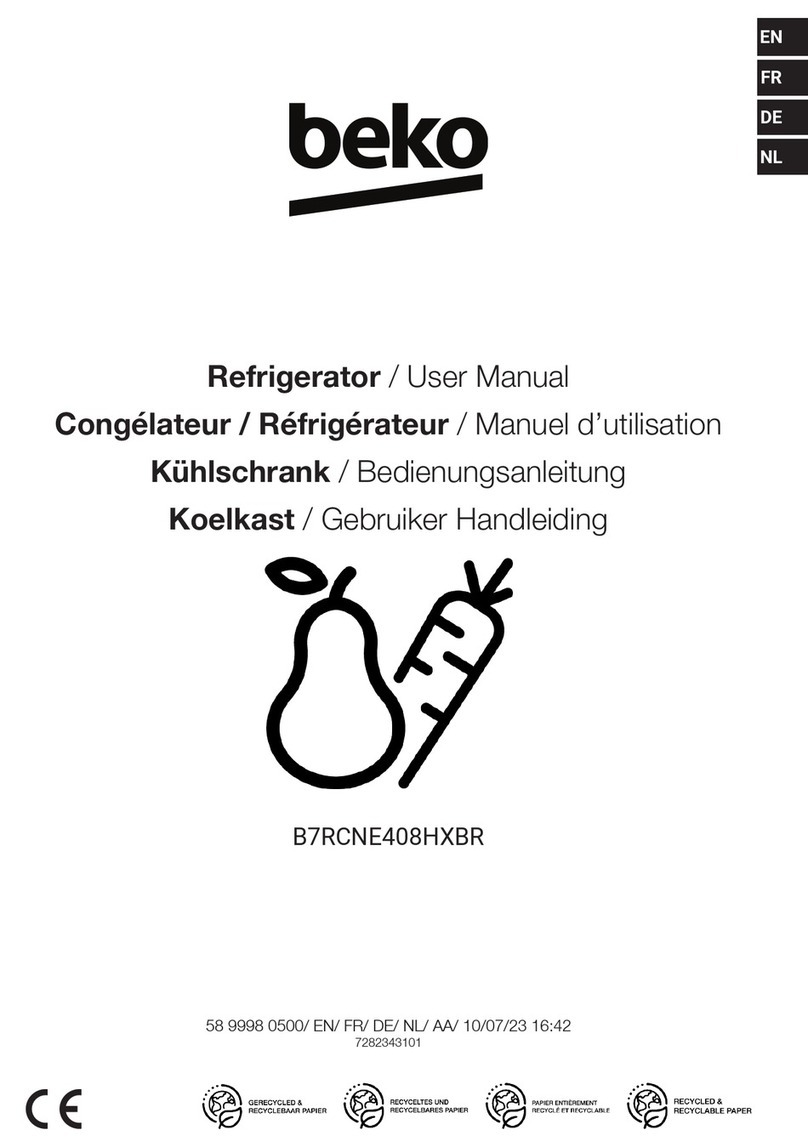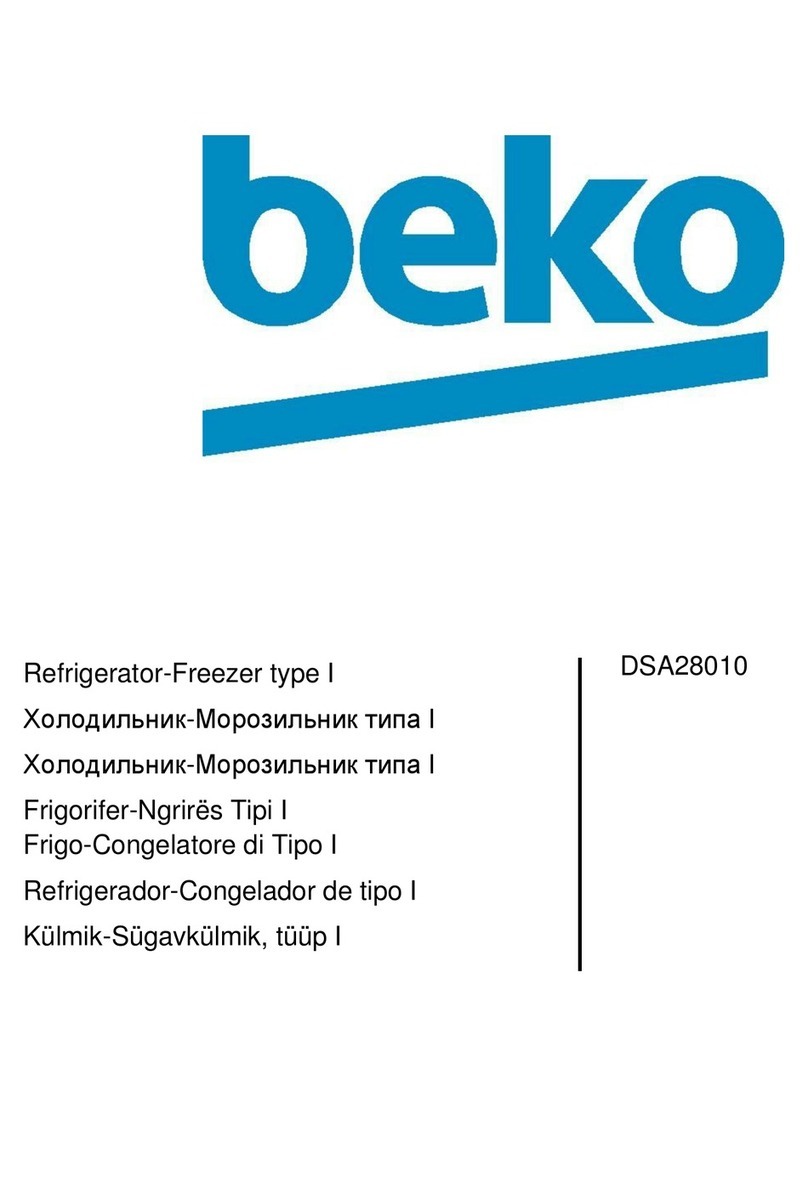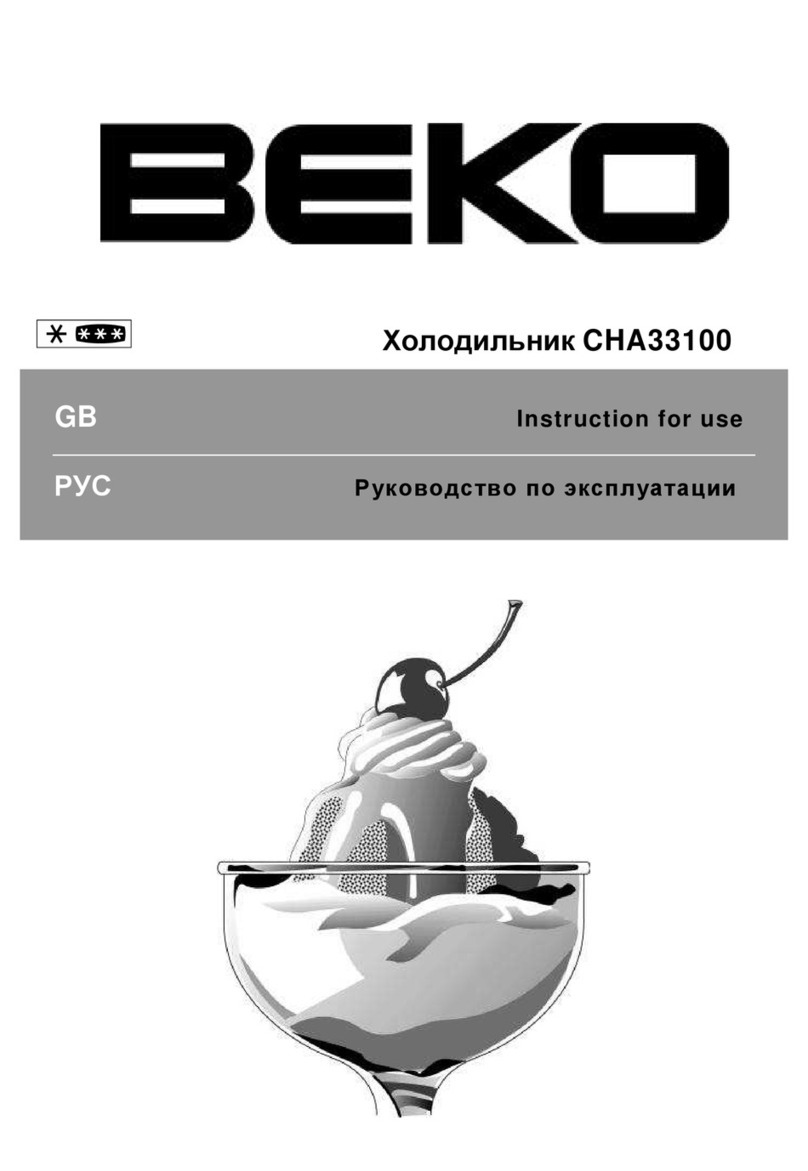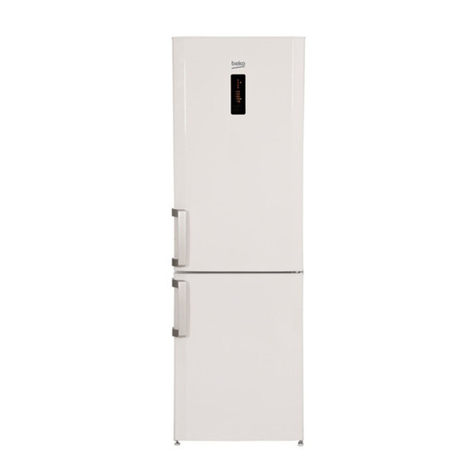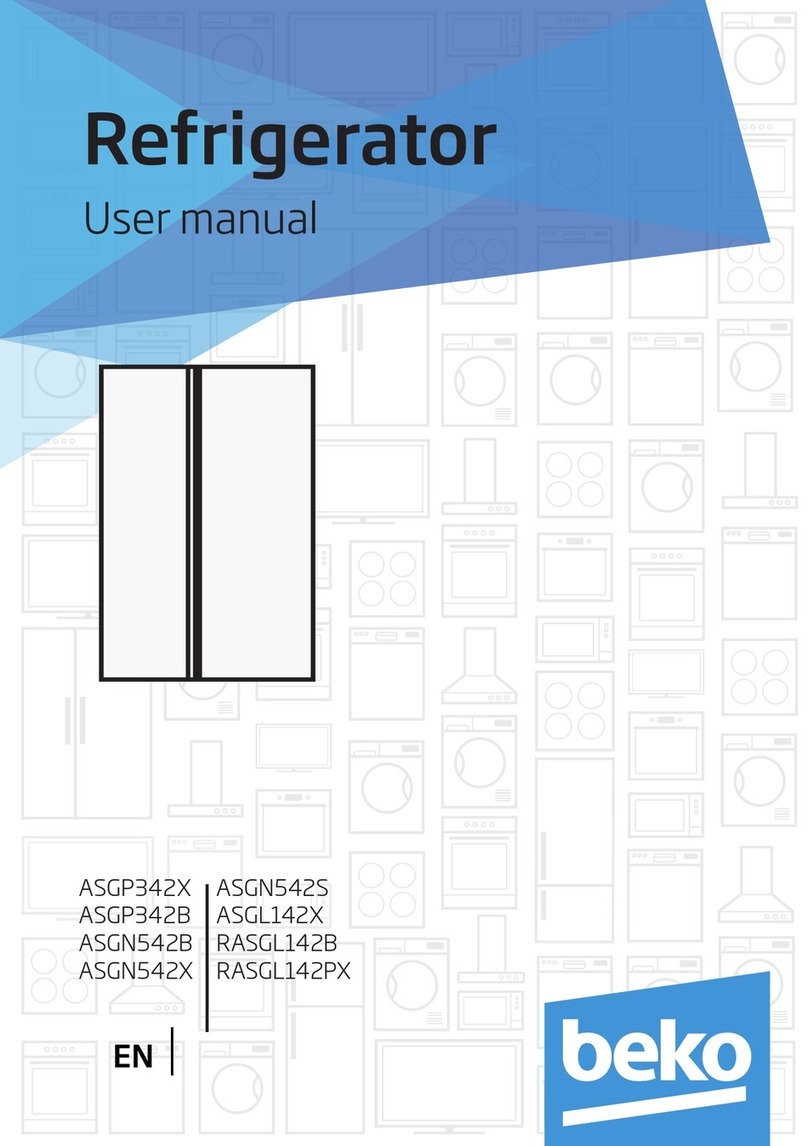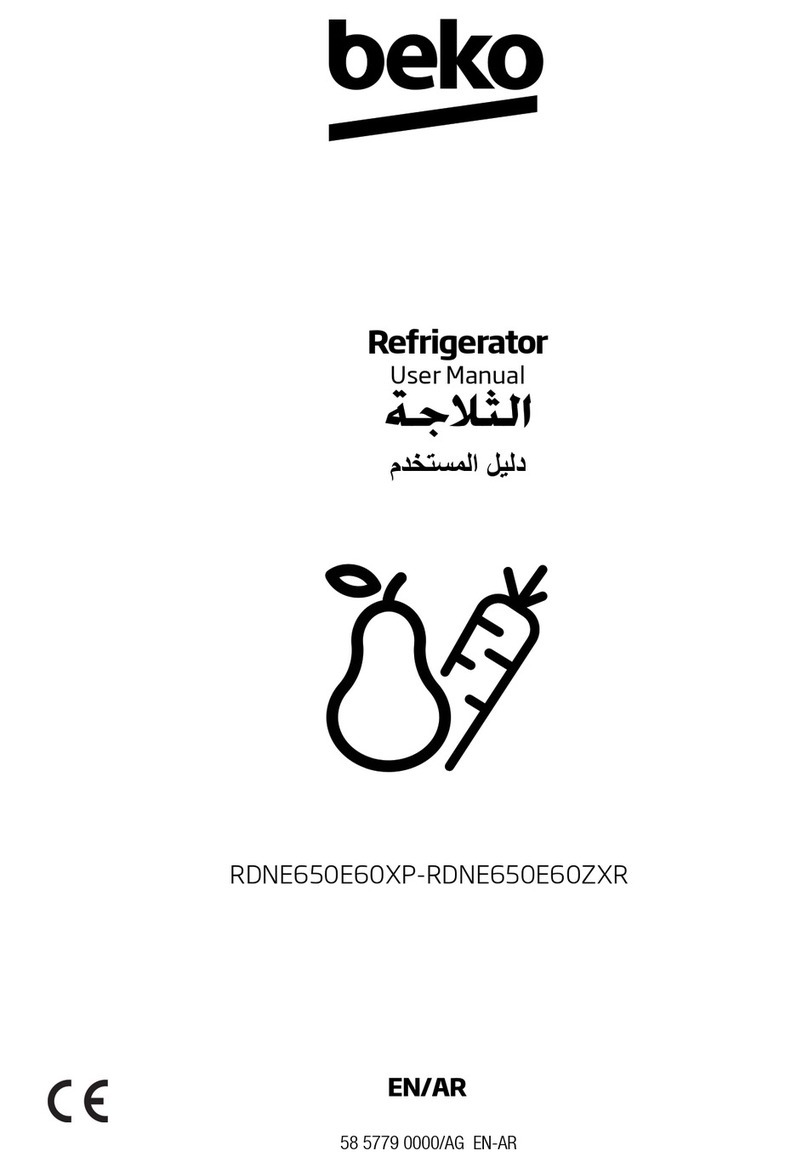
• Do not pull on the cable when
unplugging the plug.
• Place alcoholic beverages
upright, in properly sealed
containers.
• Never store aerosols containing
substances
flammable and explosive in the
refrigerator.
• Do not use mechanical tools or
other devices to speed up the
defrosting process other than
those recommended by the
manufacturer.
• This product is not intended for
use by persons (including
children) with disabilities
physical, sensory, mental, or
inexperienced, unless they have
obtained permission from those
responsible for their safety.
• Do not operate a damaged refrigerator.
Consult the authorized service in the
event of a problem.
• The electrical safety of the refrigerator
is only ensured if the earthing system
of your home complies with the
standards in force.
• Exposing the product to rain,
snow, sun, or wind poses
electrical safety hazards.
• Contact the authorized service
when a power cable is damaged
to avoid any danger.
• Never plug the refrigerator into the
wall outlet during installation. You
would put yourself at risk of death
or serious injury.
• This refrigerator is designed for
food storage only. Therefore, it
should not be used for any other
purpose.
• The label with the technical
characteristics is located on the
left wall inside the refrigerator.
• Never connect your refrigerator to
energy saving systems, this may
damage it.
• If there is a blue light on the
refrigerator, do not view it with
optical tools.
• For manually controlled
refrigerators, wait at least 5
minutes to turn on the refrigerator
after a power outage.
• If this device were to change
ownership, do not forget to give
this user manual to the new
beneficiary.
• Avoid damaging the power cable
when transporting the refrigerator.
Twisting the cable can cause a fire.
Never place heavy objects on the
power cable.
•Avoid touching the plug with wet
hands when plugging in the
device.
• Avoid plugging in the refrigerator
when the electrical outlet has
failed.
• For safety reasons, avoid spraying
water directly on the external and
internal parts of the refrigerator.
• Do not spray substances
containing flammable gases
such as propane near the
refrigerator to avoid the risk of
fire and explosion.
• Never place containers containing
water on your refrigerator, they
could cause electric shocks or a
fire.
• Avoid overloading the refrigerator
with an excessive amount
of food. If it is overloaded, food
may fall out, hurting you and
damaging the refrigerator
when you open the door.
• Never place objects on top of the
refrigerator, they could fall when
you open or close the door of the
refrigerator.
FR
